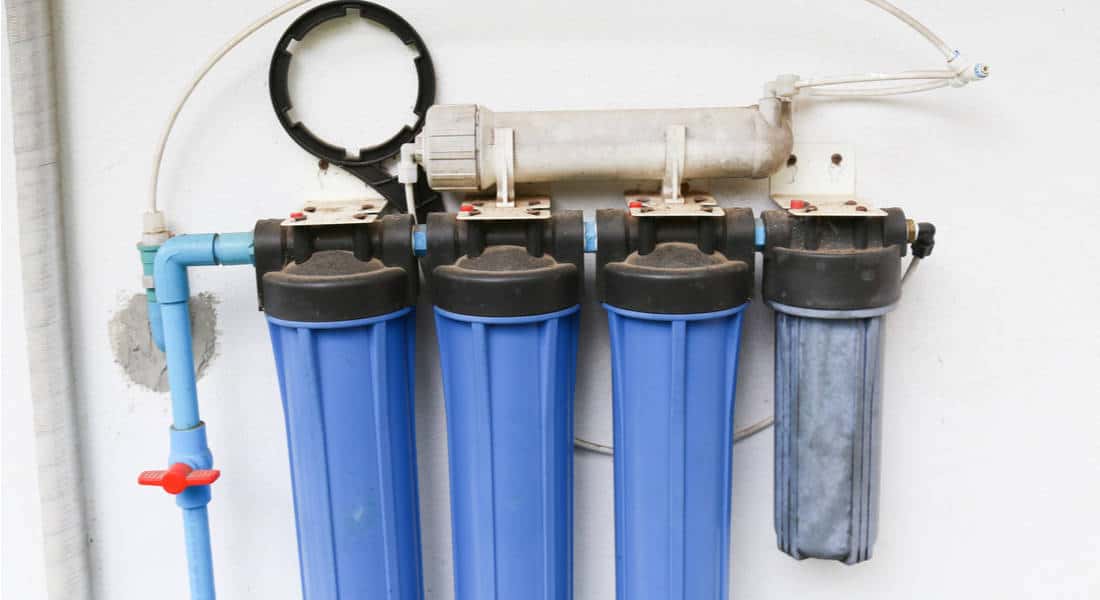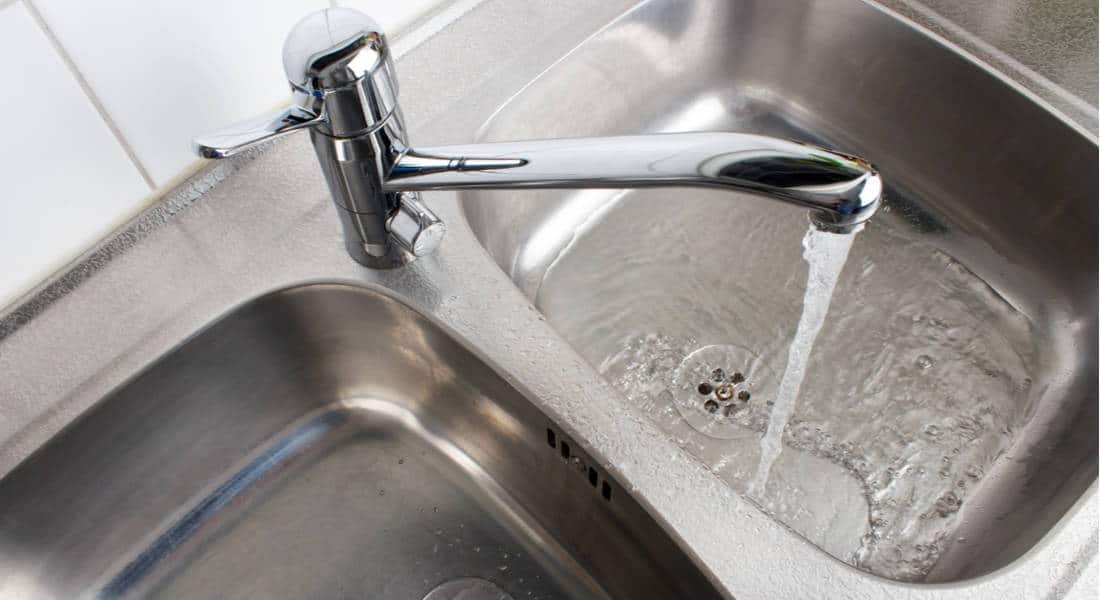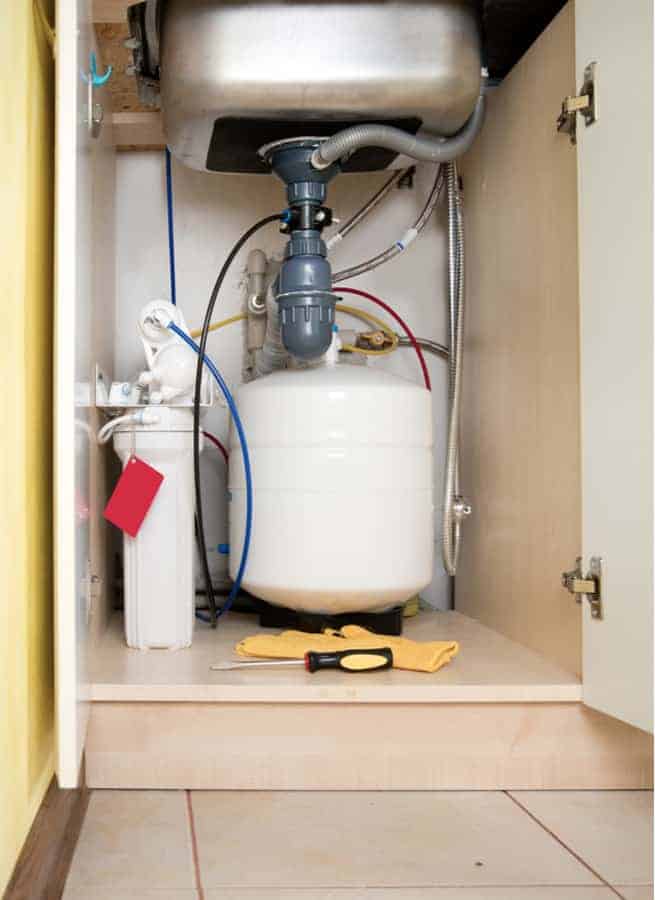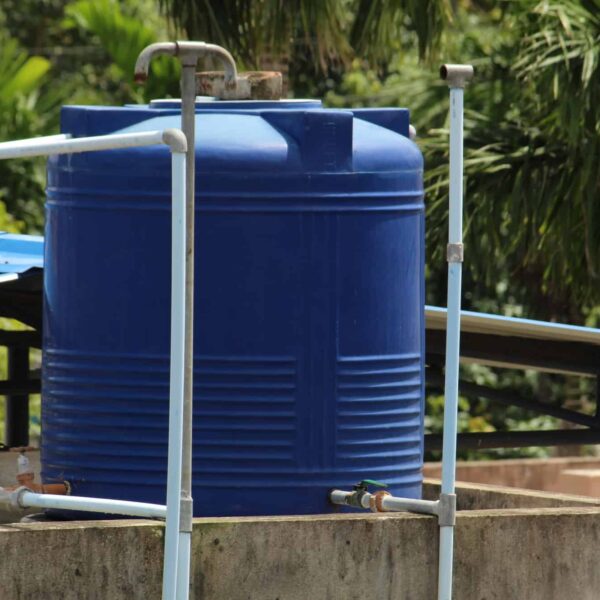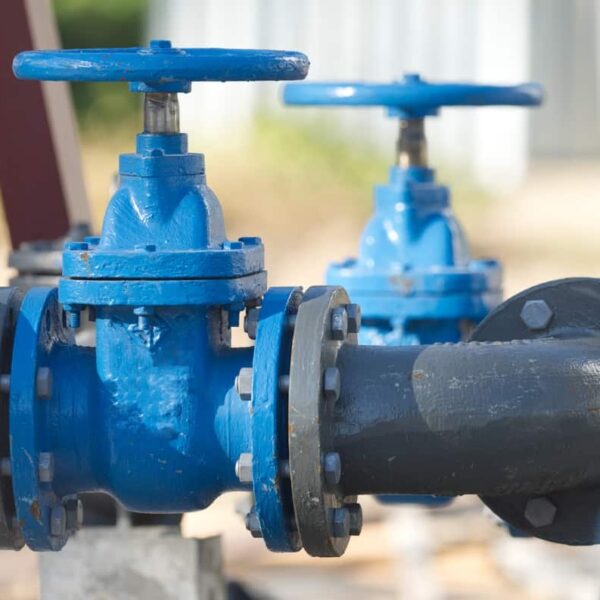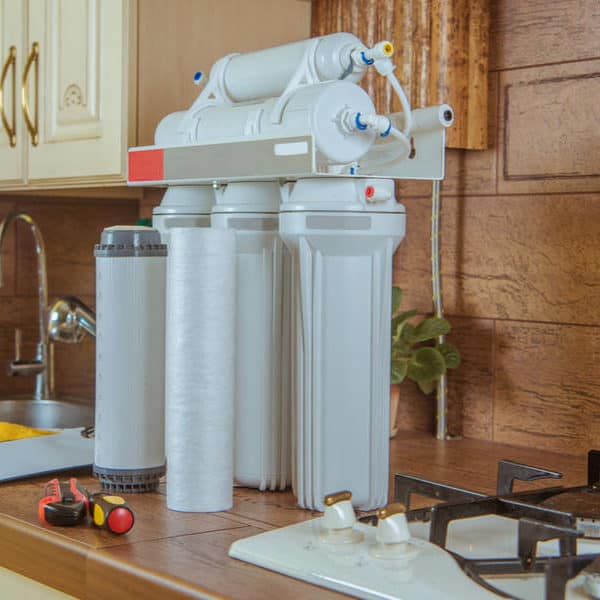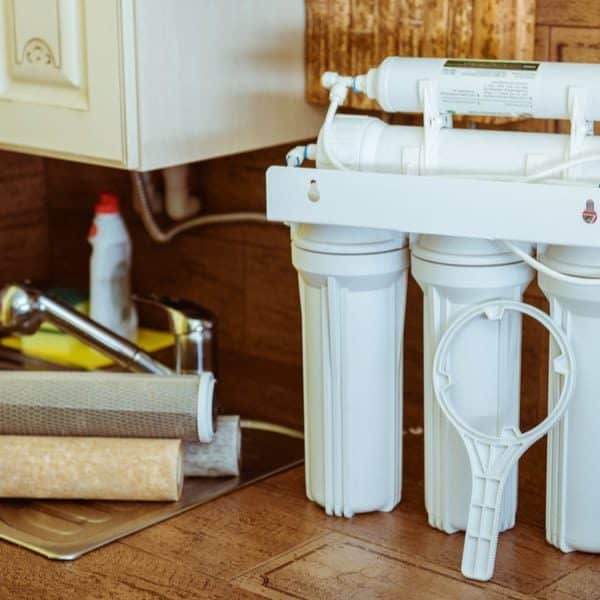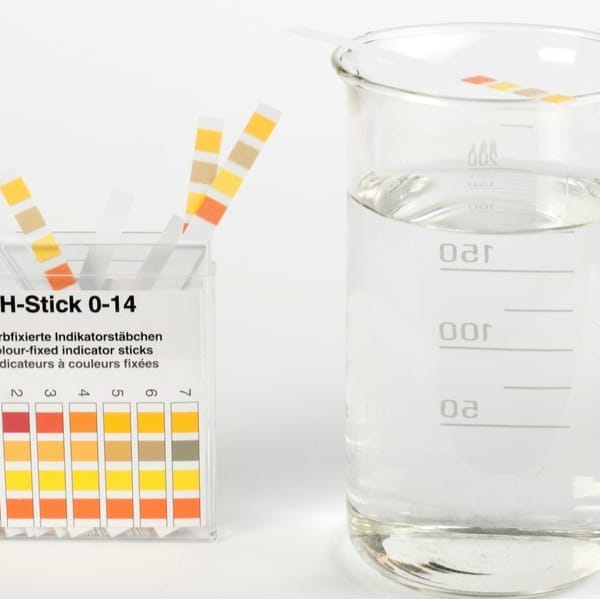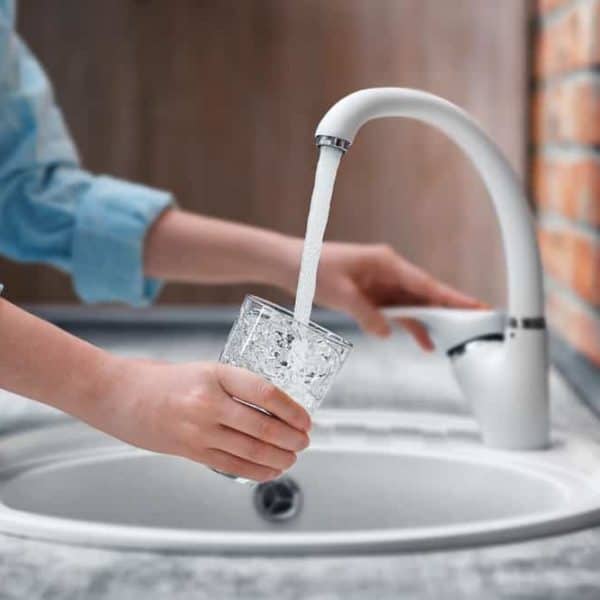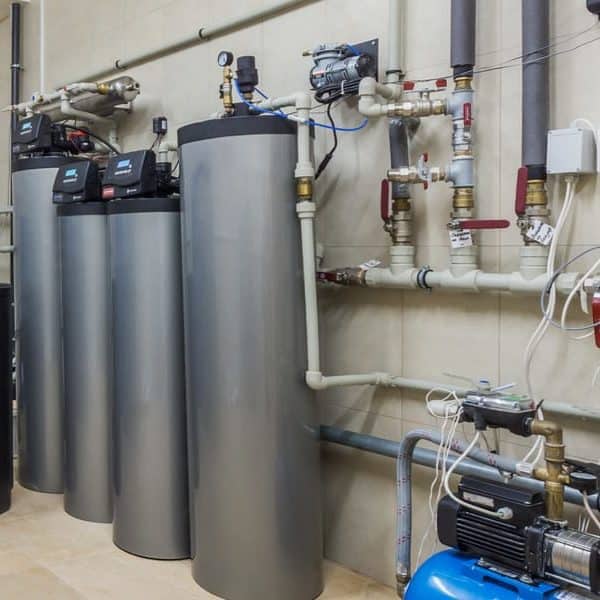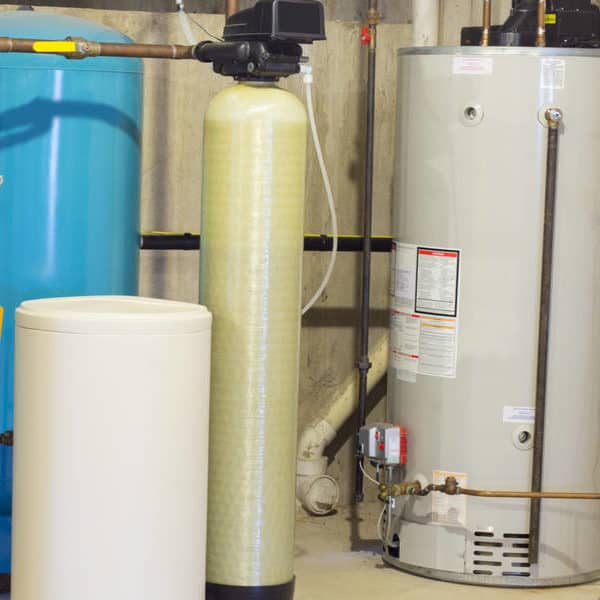Reverse osmosis (RO) system is one of the most popular types of water purifiers you can find on the market. By using this process, you can rest assured that your water supplies are as pure as possible. It will clean your water to a purity level from 95 to 97%. The primary purpose of this ultimate filtering system is to remove calcium and magnesium from the water.
However, it can also help you get rid of other particles, including chlorine and fluoride from the main water supplying system, as well as mercury, lead, iron, and asbestos. After installing this particular system in your household, you can forget about the problems connected to the hard and bad quality water.
Quick Answer
The purifying process takes time as the membrane inside is high-quality, and the filtration precision is 0.0001 μm. It doesn’t allow any harmful particles to go through it.
Since the water outlet is small, it will take time to fill in the water tank. The RO water purifier releases 50 or 75 gallons (189 – 284 l) of water in 24 hours on average. If you know that it is also necessary to remove all the bleach from the system, the calculation is more than evident.
How Does It Work?
The reverse osmosis system is basically the system working by using water pressure. The pressure forces the water from the central water supply to go through three filters.
After being cleaned, the drinking water goes to the separate storage tank, while the wastewater goes into the drain. That way, the water your family uses in your home is the one from the drinking water tank.
You can install the whole house water filter system or a small under the sink water filter, depending on your needs. No matter which one you choose, you need to maintain it regularly and keep it clean.
How to Maintain the System?
It is essential to clean and sanitize your water tank storage regularly. In fact, as soon as you install the reverse osmosis system in your household, you need to sanitize it first.
Keep in mind that you should repeat the process every six months, as the manufacturers usually specify in the manual. There are several stages to maintain this type of system. Make sure to follow the manual for cleaning as it can vary depending on the type of system you have in the house.
Start the process by turning off the water supply for the RO system. Then make sure that there is no water in the water tank. To do so, you need to open the adequate faucet while the tank entirely empties.
Before beginning with cleaning, you need to wash your hands thoroughly. Even better, you can use clean protective gloves as you will have to deal with the bleach. Since it is about drinking water, you need to provide cleaned and sterile conditions.
Take the eyedropper from the additional maintenance kit and the 5.25% bleach you may already have at home. If not, go and purchase a bottle from the local store. Then measure the necessary amount as specified in the maintenance manual. Keep in mind that the dosage depends primarily on the capacity of the system.
After disconnecting the tubing, which connects the water tank to the filters, you should insert the bleach into it by using the eyedropper. Make sure the bleach entered the water tank and connect the tubing back to the water tank. Then, you can start sanitizing the system through the process of pressuring and purging.
Pressuring the System
After checking that you have opened the water supply valve for RO filtration, you need to open a few faucets in your house. That way, you will allow purging the air from the pipes. At the very beginning, the water coming out of your taps won’t flow equally. Wait for the flow to become normal and turn off all the faucets.
The pressure in the reverse osmosis system will become regular very soon. Leave the system for two hours and then check for any water leaks. Make sure everything is tight and nicely connected. Don’t bother if you notice water spurts occurring during the first pressuring. It is a regular part of the process.
Purging the System
Now, your reverse osmosis system is ready for sanitizing. All you need is to purge it by letting the water go through it. You can start the next task by opening the adequate faucet and letting the water flow for 24 hours through the whole system.
When I first heard that the process of purging took so long, I wondered why it was necessary. Most manufacturers have the same attitude. Even though the purging time depends on a brand and manufacturer, the approximate period for letting the water go through the system is at least a day.
In fact, the purifying process takes time as the membrane inside is high-quality, and the filtration precision is 0.0001 μm. It doesn’t allow any harmful particles to go through it.
Since the water outlet is small, it will take time to fill in the water tank. The RO water purifier releases 50 or 75 gallons (189 – 284 l) of water in 24 hours on average. If you know that it is also necessary to remove all the bleach from the system, the calculation is more than evident.
You should avoid drinking the water until the purging process is over, and the system keeps working correctly. Water won’t be safe for consumption while the bleach gets out of the system entirely.
However, there are some types of water tanks you need to empty two to three times. The purging process is over when you can’t smell the odour of bleach anymore.
In both cases, you can use the water as soon as it starts flowing through the system again. Now, you can be sure that a perfect sanitary condition of the system ensures that your family receives clean and healthy water.
Additional Tips
Strange sounds – In some cases, you can hear odd sounds coming out of the reverse osmosis system even though your kitchen faucet is off. There is no need to worry since it is not unusual after the process of purging.
Once you start the system again, the water tank will begin filling, and the filters will purify the water regularly. As soon as the water tank is full and wastewater starts releasing into the drain, you won’t hear any sounds anymore.
Weaker pressure – You may also notice that the water pressure coming out from the RO faucet is not as strong as one coming directly from the water supply source pipe. It is entirely normal. The RO faucet pressure is always weaker than the standard one.
Warning – In some cases, the system is connected to the fridge ice maker. If you have such a situation, it is necessary to turn off the water supply to the fridge before beginning with the process of sanitizing. Once the process of purging the system is over, you can safely turn the water supply back on and enjoy clear ice cubes.
Conclusion
You will benefit in many different ways if you decide to install the reverse osmosis system. Maintaining is not hard at all, and it doesn’t cost much. The only thing that matters is to pick out the right capacity of the system.
Keep in mind that in many states, it is obligatory to hire a professional plumber to install it. Therefore, review the state plumbing regulations and laws before doing anything.
